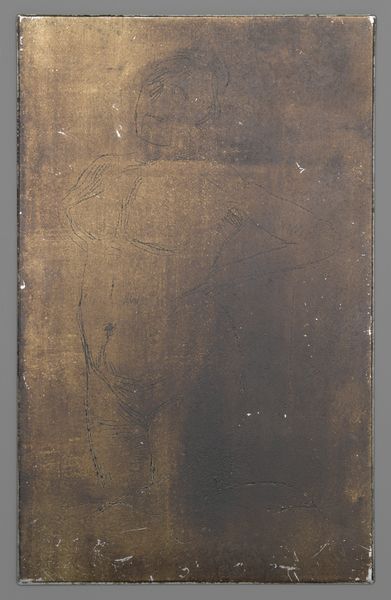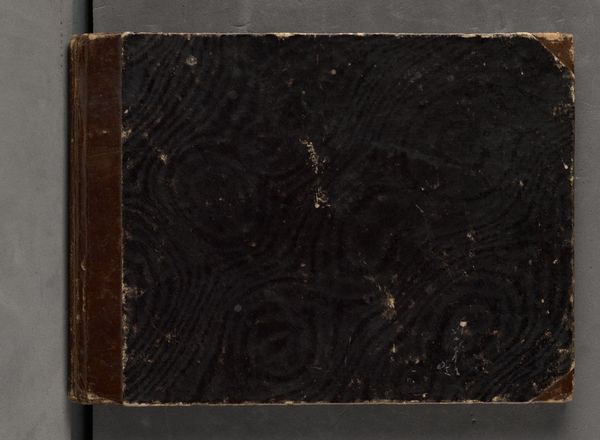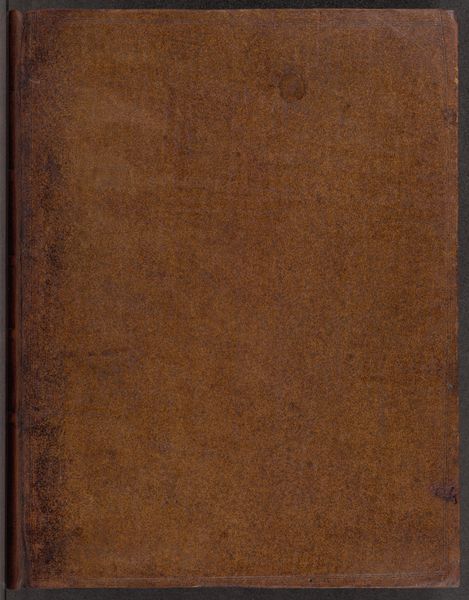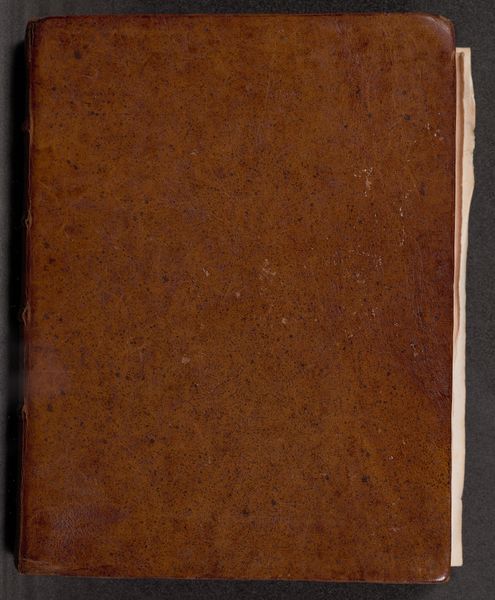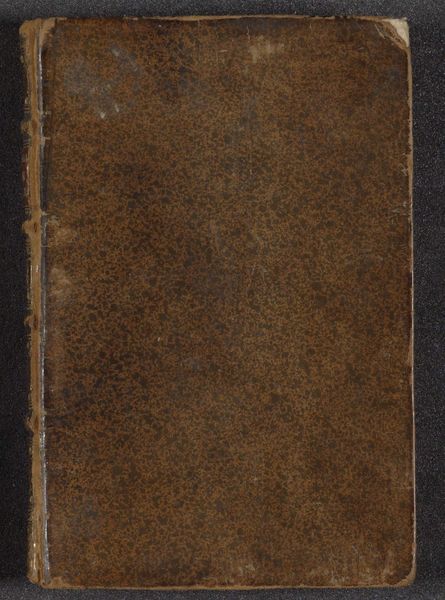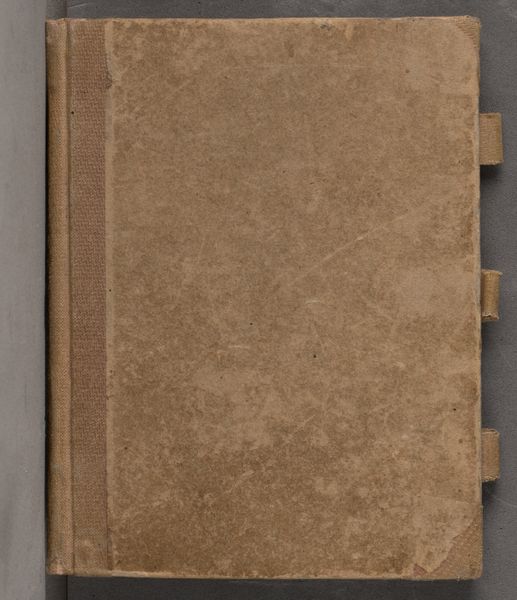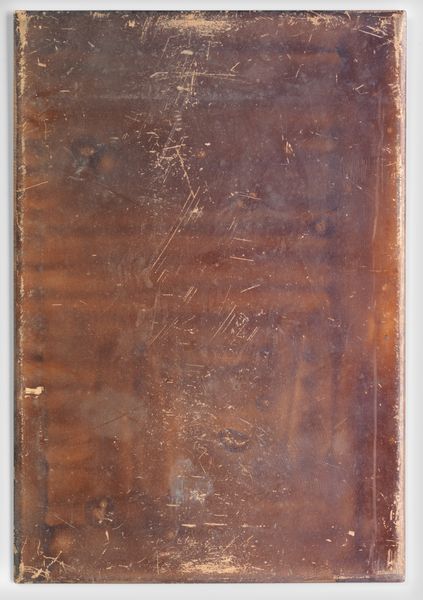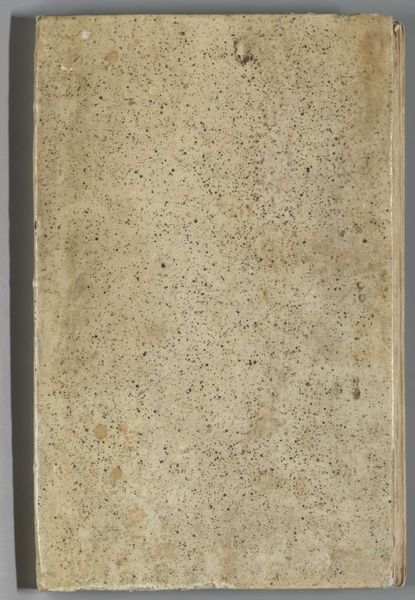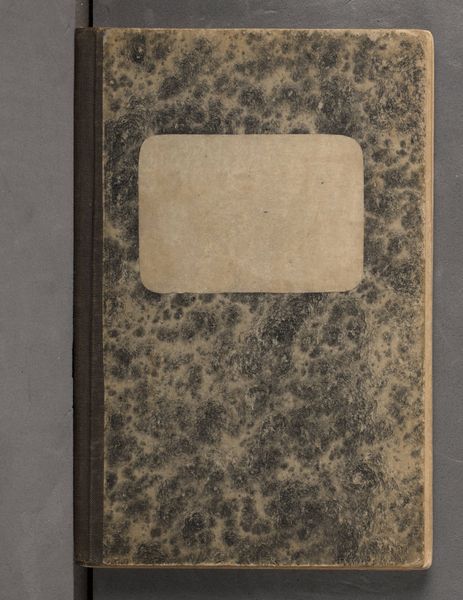
L'Architecture et Art de Bien Bastir du Seigneur Leon Baptiste Albert, Gentilhomme Florentin, divisée en dix livres, Traduicts de Latin en François, par deffunct Ian Martin, Parisien, negueres Secretaire du Reuerendissime Cardinal de Lenoncourt Possibly 1553
0:00
0:00
print, textile, paper
# print
#
textile
#
paper
#
11_renaissance
#
italian-renaissance
Dimensions: page size: 33.6 x 21.7 cm (13 1/4 x 8 9/16 in.)
Copyright: National Gallery of Art: CC0 1.0
Curator: Here we have a rare find: "L'Architecture et Art de Bien Bastir du Seigneur Leon Baptiste Albert," a volume possibly from 1553 by Leon Battista Alberti. Editor: My initial thought is "worn." The textile covering is visibly aged, almost translucent in places. It looks as if it's absorbed a lot of history. Curator: It certainly has. Alberti’s treatise, originally in Latin, was a hugely influential work on Renaissance architectural theory, codifying classical principles and applying them to contemporary design. This is a French translation, highlighting its broad appeal at the time. Editor: Broad appeal, and no doubt reserved for a very particular segment of society. Printed and bound, the volume represents a significant development in the dissemination of ideas, but it also reflects the social hierarchies that dictated who had access to knowledge. It makes me wonder about the specific readership and its effect on the built environment of the era. Curator: The book served as a practical guide for architects and patrons alike, influencing the construction of churches, palaces, and civic buildings. The very act of translating and disseminating architectural principles helped standardize building practices across Europe, even reinforcing a certain visual vocabulary of power. Editor: And by power, you mean mostly wealthy, white, male power, right? How does the standardization of building practices intersect with existing cultural forms? Does this create a monoculture in the architectural sense? Who were the architects before and who were excluded from architectural pursuits as the result of it becoming institutionalized? Curator: Those are excellent questions. What the Renaissance, particularly within the framework of print, made possible was a systematization of knowledge. Alberti helped democratize ideas on design through this volume and through its various translations. Editor: While this volume surely holds knowledge, its true legacy lies in the effects of that knowledge. This beautiful piece of paper and textile must be viewed alongside the architectural movements it birthed and helped foster if we're going to have a real, robust understanding of this piece and the movements it bore. Curator: A vital point indeed, one which is made more salient when one truly grapples with the institutionalization of artistry in conjunction with who it uplifted, as well as excluded, both at its inception and in its ever rippling after-effects. Editor: To come face to face with history's complexities—that’s what makes the experience of seeing art like this volume transformative. Thank you.
Comments
No comments
Be the first to comment and join the conversation on the ultimate creative platform.
